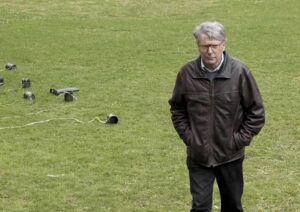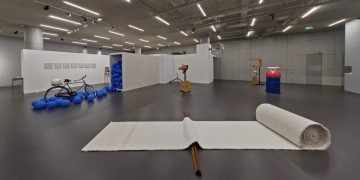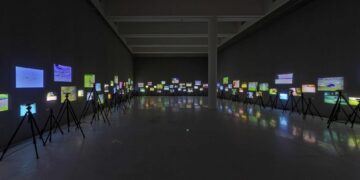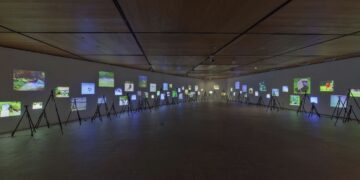罗曼·西格纳(1938年生于瑞士阿彭策尔)是一位从事雕塑、艺术装置、摄影和录像的视觉艺术家。1966-1971年他就读于瑞士苏黎世和卢塞恩的设计学院,1971-1972年就读于波兰华沙艺术学院。现居住于瑞士圣加仑。
他的作品通常被称作「时间的雕塑」。依循着传统艺术家对雕塑在物理材料三维的雕琢,罗曼加入了第四维的概念——时间。「时间的雕塑」专注于时间作用于物质的改变,专注于观者之于事件的经验,改变的功效,以及其作用力。融合了三维物件、现场行动、静态照片,以及动态影像记录。罗曼的「时间雕塑」通常保有或释放能量,伴有其独特稍纵即逝的幽默。
「帽子和火箭」(1983)点燃的焰火连接着戴在罗曼头上的毛线帽子,火箭瞬间升空,将帽子也带上云霄。「凳子」(1992)中被烟火催动的凳子,从高处的窗子中落下,砸得粉碎。「卡莫」(1986)瑞士一座小山的山峰上,罗曼的焰火,让小山成为活着的火山口。「专人的行李箱」(1989/2001)装满水泥的行李箱被直升机带上空中,在一百米高空落下,如同一个人造陨石,落入草地,形成了一个小坑。
简捷!从雕塑到时间雕塑美丽而简练:初体验的,如艺术家经常挂在嘴上的说词。他总是严谨的创作着每个进程和材料,罗曼诗意的作品饱含忧郁与惊喜,迷人而暴力,忧伤而率真,无法抵抗的童趣,并在感性的方面四通八达。
Roman Signer (born 1938 in Appenzell, Switzerland) is principally a visual artist who works in sculpture, art installations photography, and video. He studied at the Schule für Gestaltung in Zurich and Lucerne between 1966 and 1971. He studied at the Academy of Fine Arts in Warsaw, Poland from 1971-1972.
His works have acquired the label ‘time-sculpture’. They share traditional sculpture’s concern with the crafting of physical materials in three dimensions, but they extend that concern into what may or may not be characterised as the fourth dimension: the dimension of time. Time-sculpture investigates the transformation of materials through time, focusing the viewer’s attention on the experience of the event, the changes wrought, and the forces involved. Variously combining three-dimensional objects, live action, still photography and moving-image documentation, Signer’s time-sculptures frame episodes of the containment and release of energy − always with ingenuity, often with captivating, epigrammatic swiftness and irresistible humour.
In Cap with Rocket (Mütze mit Rakete 1983), for example, a length of string connects a firework and a knitted hat that Signer has pulled over his head. The firework is ignited; it shoots into the air and whisks the hat away, revealing the artist’s face. In Stool − Kurhaus Weissbad (Hocker − Kurhaus Weissbad 1992) a small explosion triggers the catapulting of a four-legged stool out of a window; the stool sails through the air and crashes to earth. In Kamor (Kamor 1986) a gunpowder explosion at the summit of a small mountain in the Swiss canton of Appenzell produces a burst of flame and a plume of smoke and momentarily lends the summit the appearance of a live volcano. In Attaché Case (Aktenkoffer 1989/2001) a concrete-filled briefcase is taken on a short ride in a fast machine − a helicopter, to be precise. At a height of about a hundred metres it is dropped. Like a meteorite, it plummets into a grassy field and gouges a deep crater in the turf.
Simple! And in some ways, the step from sculpture to time-sculpture is indeed beautifully simple: elementary, to borrow a word the artist himself has often associated with his work. In the face of the striking immediacy and poetic plasticity of Signer’s pieces, critical commentaries can sometimes seem frankly redundant − like a dull-witted, pedantic glossing of a perfectly-timed, beautifully-judged joke. The critic is dogged by the suspicion that (to co-opt a phrase from Simon Critchley) a time-sculpture ‘explained’ might be a time-sculpture misunderstood. From a seemingly restricted palette of processes and materials, Signer generates a poetics whose tones range from the melancholy to the thrilling, from the charming to the violent, from the grave to the frankly, irresistibly silly, and many points north, south, east and west of these affective co-ordinates. (Rachel Withers)




